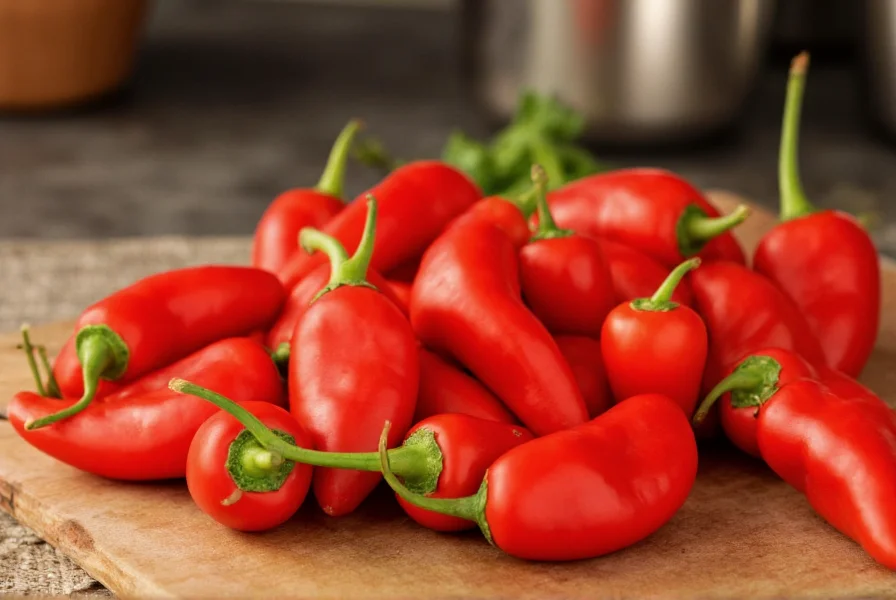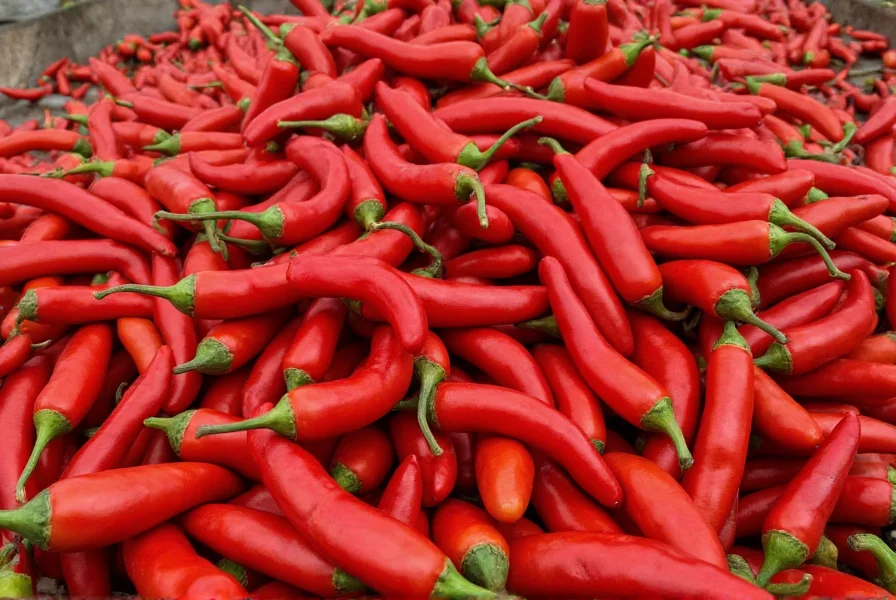The Mirasol chili, whose name translates to “sunflower” in Spanish, has become increasingly popular among home cooks and professional chefs seeking authentic Mexican flavors. This versatile pepper belongs to the Capsicum annuum species, sharing botanical roots with jalapeños and serranos but offering its own distinctive characteristics.
Physical Characteristics and Identification
Mirasol chilies typically measure 2-4 inches in length with a slender, tapered shape that curves slightly upward—hence the “sunflower” reference. They mature from green to vibrant shades of orange and red, developing thin but firm walls. When selecting fresh Mirasol chilies, look for glossy skin without wrinkles or soft spots, which indicates peak freshness. The seeds are pale yellow to light green and remain edible though they contain concentrated capsaicin.
| Characteristic | Mirasol Chili | Comparison to Jalapeño |
|---|---|---|
| Scoville Heat Units | 2,500-10,000 | Slightly hotter |
| Flavor Profile | Fruity, bright, grassy | Less earthy, more citrus notes |
| Typical Length | 2-4 inches | Similar size |
| Wall Thickness | Thin | Thicker in jalapeños |
Heat Level and Flavor Profile Analysis
Understanding mirasol chili heat level is essential for proper culinary application. With 2,500-10,000 Scoville Heat Units (SHU), Mirasol chilies sit comfortably in the medium-heat category—noticeably warmer than poblanos (1,000-2,000 SHU) but significantly milder than habaneros (100,000-350,000 SHU). The heat builds gradually rather than hitting immediately, allowing the complex flavor to shine through before the warmth registers.
The mirasol chili flavor profile distinguishes it from similar peppers. It offers bright citrus notes with subtle berry undertones and a clean finish, unlike the earthier jalapeño or the smoky chipotle. This nuanced flavor makes it particularly valuable in dishes where the pepper's taste should complement rather than dominate other ingredients.

Culinary Applications and Traditional Uses
Chefs value Mirasol chilies for their versatility across cooking techniques. When raw, they add vibrant heat to fresh salsas and guacamole. Roasted over open flame, they develop complex smoky-sweet notes perfect for sauces and stews. Dried Mirasol chilies (known as chiles secos de mirasol) become chiles guajillo when fully matured, though they retain distinct flavor characteristics even in dried form.
Traditional Mexican cuisine features Mirasol chilies prominently in:
- Oaxacan mole sauces (particularly mole coloradito)
- Salsa verde preparations
- Adobos and marinades for meats
- Bean and rice dishes for subtle background heat
Growing Mirasol Chilies at Home
Gardeners interested in how to grow mirasol chilies should note these peppers thrive in warm climates with 6-8 hours of direct sunlight daily. They require well-draining soil with pH between 6.0-7.0 and consistent moisture without waterlogging. Start seeds indoors 8-10 weeks before last frost, transplanting outdoors when soil temperatures exceed 65°F (18°C).
Mirasol plants typically reach 2-3 feet in height and produce abundant fruit within 70-80 days of transplanting. For optimal flavor development, allow peppers to fully ripen on the plant until they achieve their characteristic bright orange-red color. Harvest by cutting rather than pulling to avoid damaging the plant.

Nutritional Benefits and Storage Tips
Beyond their culinary value, Mirasol chilies offer significant nutritional benefits. They're exceptionally high in vitamin C (providing more than citrus fruits by weight), contain capsaicin with potential metabolic benefits, and deliver vitamins A, B6, and K. The capsaicin content may support circulation and provide temporary pain relief when applied topically.
For proper storage, keep fresh Mirasol chilies in a paper bag in the refrigerator's crisper drawer for up to two weeks. For longer preservation, freeze whole peppers on a baking sheet before transferring to airtight containers, or dry them using a food dehydrator at 135°F (57°C) for 8-12 hours. Dried Mirasol chilies maintain quality for 6-12 months when stored in airtight containers away from light.
Finding and Purchasing Mirasol Chilies
Locating authentic Mirasol chilies can be challenging outside Mexico and the southwestern United States. Check specialty Mexican markets, particularly during summer and early fall when they're in season. Some farmers' markets in warm climate regions may carry them, and several online retailers now offer fresh, dried, or frozen options.
When searching where to buy mirasol chilies, verify you're getting true Mirasol rather than mislabeled serranos or jalapeños. Authentic Mirasol chilies have a distinctive upward curve and thinner walls than similar-sized peppers. If unavailable fresh, dried Mirasol (often labeled as guajillo when fully mature) provides a reasonable alternative for many recipes.
FAQ
How does Mirasol chili compare to serrano in heat level?
Mirasol chilies typically range from 2,500-10,000 Scoville units, making them slightly milder on average than serranos (10,000-23,000 SHU). While there's overlap in their heat ranges, Mirasol generally provides a more gradual heat build-up with brighter flavor notes compared to serrano's sharper, more immediate heat.
Can I substitute jalapeños for Mirasol chilies in recipes?
Yes, but with adjustments. Jalapeños have thicker walls and earthier flavor. Use 1.5 jalapeños for every 1 Mirasol chili, and consider adding a pinch of citrus zest to approximate Mirasol's brighter flavor profile. For dried applications, combine jalapeño powder with a touch of cayenne for closer heat replication.
What's the best way to reduce Mirasol chili heat without losing flavor?
Remove seeds and white membranes (placenta) where most capsaicin concentrates. For significant heat reduction while preserving flavor, briefly blanch sliced chilies in boiling water for 30-60 seconds, then shock in ice water. Alternatively, cook chilies with dairy (like cream or cheese) which binds to capsaicin molecules, reducing perceived heat.
Are Mirasol chilies the same as guajillo peppers?
Mirasol chilies become guajillo when fully matured and dried. Fresh green Mirasol are sometimes called “chiltepin,” while the ripe red version becomes guajillo upon drying. True guajillo refers specifically to dried Mirasol chilies that have reached full maturity, offering a more complex, berry-like flavor compared to younger dried versions.
How can I tell when Mirasol chilies are perfectly ripe for harvesting?
Mirasol chilies reach peak ripeness when they transition from green to vibrant orange or red while maintaining firmness and glossy skin. The upward curve becomes more pronounced, and the skin develops slight translucency when held to light. Avoid waiting until they show signs of softening or wrinkling, which indicates over-ripeness.











 浙公网安备
33010002000092号
浙公网安备
33010002000092号 浙B2-20120091-4
浙B2-20120091-4